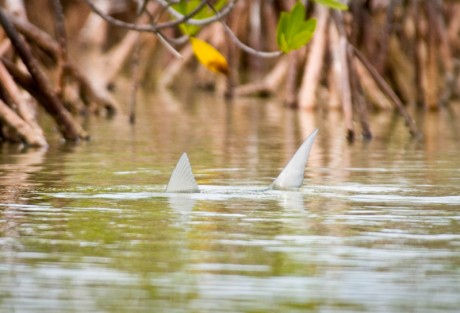
Most of the time that you’re casting a fly to a bonefish, that fish is cruising and you want to lead him with your fly – maybe 2 to 10 feet depending on the situation. Leading him gives your fly time to sink and ensures that he doesn’t spook from the ‘plunk’ of the fly landing.
If you’re lucky enough to be casting to a tailing bonefish, however, most of the time you want to get the fly really close – like ‘Hit ‘Em On the Head’ close. Here’s why.
- Tailing fish are happy! They’re feeding actively and usually aren’t too spooky.
- Bonefish move erratically when they’re tailing. They zig and zag quite a bit, which makes leading them really hard to pull off. Put it where they are, right now.
- They’ve got their face buried in the sand and they’re kicking up sand and that means they’re not going to see much of anything that’s more than a foot or two away anyhow!
Note: This is not an excuse to ignore the fact that shallow water requires light flies. Be reasonable.
We spend a lot of time casting to tailing fish at Andros South – if you want to get in on the fun, you should drop us a line and get that trip on the books.

“not an excuse to ignore the fact that shallow water requires light flies. Be reasonable.”
Love that! The written truth. What you need is something that lands softly, doesn’t absorb water, and sinks fairly quickly to fish level. Avoid materials that absorb — wool, bunny strips, etc. Also avoid buoyant stuff — deer hair, bucktail, poly-yarn crabs. I recommend stuff like Craft Fur, which is pretty much the opposite of these other materials, that sparkle-yarn stuff for Merkins, and other synthetics like Angel Hair. Calf-tail is OK, but does have a little buoyancy to it, especially toward the base of the tail. The tip hairs are better, more like Craft Fur — denser, soft, and semi-translucent.
Good bonefish food.
Fantastic input as always, Davin – thanks!
Andrew
No worries. Love this site and all the bonefishy goodness therein.